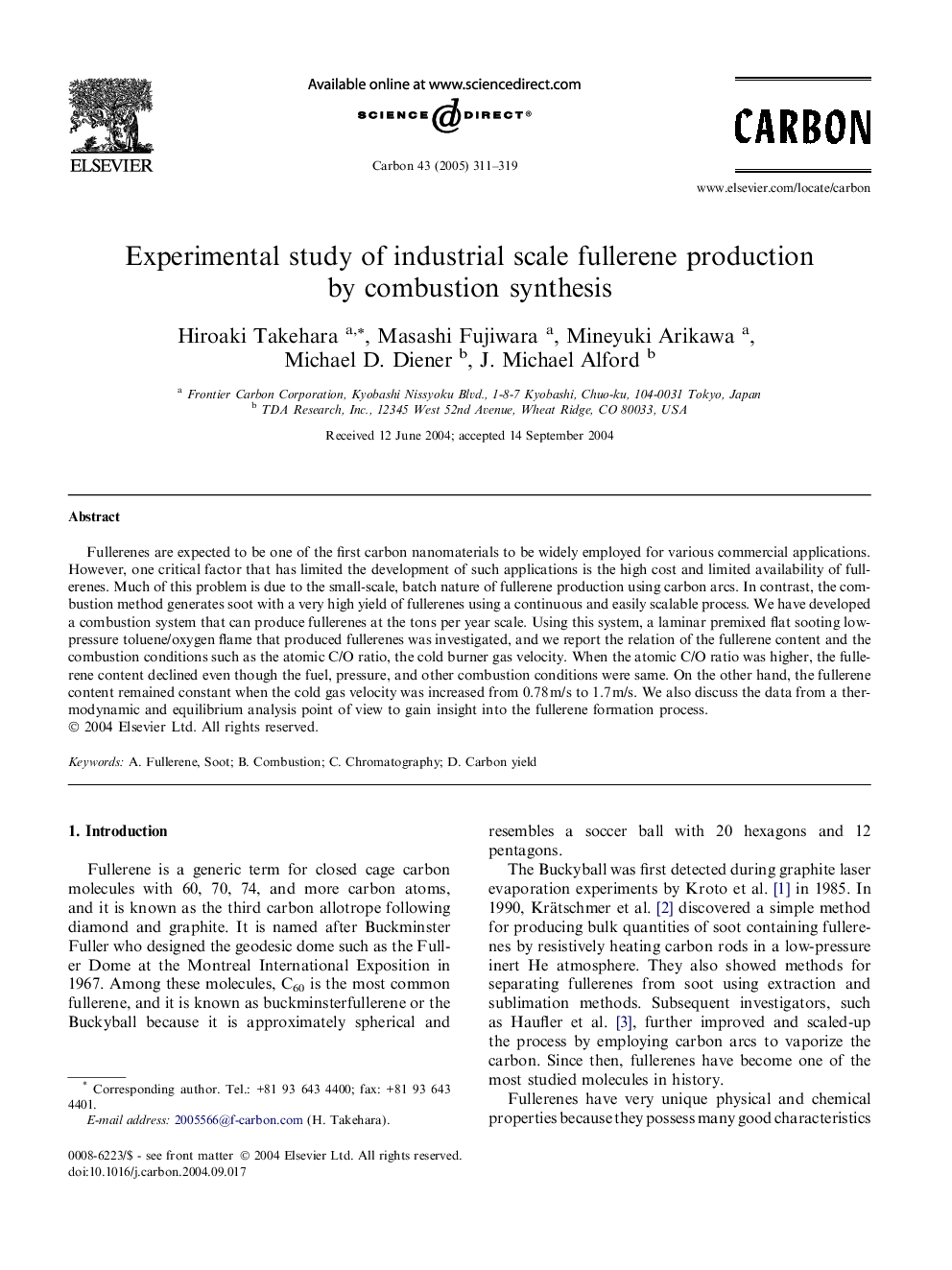| Article ID | Journal | Published Year | Pages | File Type |
|---|---|---|---|---|
| 10611363 | Carbon | 2005 | 9 Pages |
Abstract
Fullerenes are expected to be one of the first carbon nanomaterials to be widely employed for various commercial applications. However, one critical factor that has limited the development of such applications is the high cost and limited availability of fullerenes. Much of this problem is due to the small-scale, batch nature of fullerene production using carbon arcs. In contrast, the combustion method generates soot with a very high yield of fullerenes using a continuous and easily scalable process. We have developed a combustion system that can produce fullerenes at the tons per year scale. Using this system, a laminar premixed flat sooting low-pressure toluene/oxygen flame that produced fullerenes was investigated, and we report the relation of the fullerene content and the combustion conditions such as the atomic C/O ratio, the cold burner gas velocity. When the atomic C/O ratio was higher, the fullerene content declined even though the fuel, pressure, and other combustion conditions were same. On the other hand, the fullerene content remained constant when the cold gas velocity was increased from 0.78Â m/s to 1.7Â m/s. We also discuss the data from a thermodynamic and equilibrium analysis point of view to gain insight into the fullerene formation process.
Related Topics
Physical Sciences and Engineering
Energy
Energy (General)
Authors
Hiroaki Takehara, Masashi Fujiwara, Mineyuki Arikawa, Michael D. Diener, J. Michael Alford,
